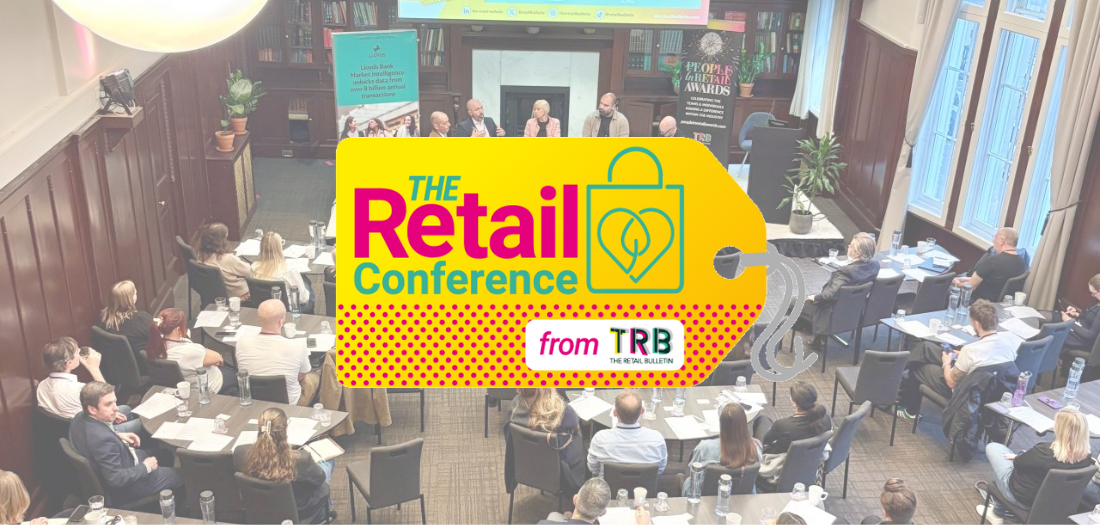

Key Insights from The Retail Conference: Innovation and Community
At this year’s Retail Conference, hosted by The Retail Bulletin, leaders from across the retail landscape gathered to explore how technology, creativity and human connection are driving the next wave of transformation.
From the acceleration of AI and digital retail media to the enduring value of community and empathy, one theme came through loud and clear. Retail is evolving faster than ever, and the winners will be those who can combine innovation with authenticity.
The Yocuda team were thrilled to be showcasing our digital receipt solution to retailers throughout the day and listening to the key insights from the sessions.
Here are some of our main takeaways from the event:

1. Innovation Starts with People, Not Technology
Digital transformation doesn’t start with new systems; it starts with culture and the willingness to embrace it by your teams. That was the central message from Andrew Xeni, Founder and CEO of Fabacus and Nobody’s Child, who has successfully scaled three businesses under one guiding principle: engagement drives adoption.
He described how, at Nobody’s Child, the team hosts open forums every eight weeks where vendors can speak directly with senior leadership teams. “You might have the best tool,” he said, “but it won’t deliver if your team doesn’t embrace it.”
This sentiment was echoed by Nuno Miller, former Digital COO at N Brown Group, who set up an internal AI incubator to explore the practical uses of emerging tools like ChatGPT, rather than banning them. The goal was to create a safe, collaborative space where innovation could thrive without the fear of failure.
The key takeaway is that successful digital transformation relies less on what technology you buy and more on how you bring people along for the journey. As Xeni put it, adapt or die. In today’s fast-moving market, that is not hyperbole; it is survival.
2. AI: From Fear to Empowerment
It is impossible to ignore how quickly AI is reshaping retail. In just six months, Xeni noted, AI-driven traffic at Nobody’s Child jumped from under 10% to 40%. The pace of change is staggering and can be unsettling for many.
But the tone of the discussion has shifted from fear to opportunity. Retailers are realising that AI isn’t about replacing people, it’s about enhancing productivity and creativity. As Xeni put it, his aim isn’t to cut headcount, but to double the business while keeping the same team, using AI as an enabler, not a threat.
Trevor Gordon, Chief Digital and Technology Officer at Save the Children UK, added an important reminder about transparency. Customers need to understand the value exchange and what they are getting in return for sharing their data. Without that trust, even the smartest technology will fall flat.
Meanwhile, Julian Burnett of Quercus Advisors reinforced the need for collaboration between retailers and tech partners. “AI’s mathematics are now beyond human ability,” he said, “so we have to rely on experts to guide us.”
The underlying message is clear. AI is not the enemy. Apathy is. Retailers who experiment early, fail fast, and stay transparent will be the ones who harness AI’s full potential.

3. Loyalty and Community are the New Growth Engines
Loyalty is changing. Today’s consumers don’t just want points or personalised offers, they want connection.
Shetal Bhatt, Global Head of Digital Marketing, Loyalty and Consumer Engagement at Costa Coffee, explained that modern loyalty begins with data but flourishes through meaningful value exchange. Customers are willing to share information if they get something tangible in return. A free birthday cake for providing your date of birth may sound simple, but it builds emotional equity.
For Janis Thomas, Managing Director at Look Fabulous Forever, loyalty comes from community, not just commerce. Her customers are part of a private online group of 10,000 members who mostly discuss lifestyle, not products. “It’s about being part of something bigger than a transaction,” she said. That community-first approach has led to 80% of revenue coming from returning customers, who on average place seven repeat orders after their second purchase.
Clare Olding, formerly Head of Loyalty at Topps Tiles, brought the point down to earth. Often, loyalty lies with people, not programmes. Customers are sometimes loyal to the store manager, not necessarily the brand. Also, listening to customers who do not shop with you can be just as valuable as analysing the data from those who do.
In short, successful loyalty is about relevance, empathy, and belonging. The brands building communities, not databases, are the ones that will win long-term.
4. Physical Retail is Alive, Experiential, and Emotional
Despite the noise about digital-first retail, there was a resounding agreement that physical stores are more important than ever, but their role has evolved.
For Catherine Loftus, Brand Director at Bird & Blend Tea Co., the store is a stage. Rooted in Brighton’s vibrant culture, her brand thrives on theatre and experience. “We attract actors,” she said, “because our in-store experience is a performance, one that customers want to be part of.”
At the other end of the spectrum, Lucy Litwack, CEO of Coco de Mer, described her boutiques as safe, intimate spaces for conversation and education, especially in a sector that faces online censorship. “We offer drinks, time and personal service,” she explained. “People come to touch, to feel the products, to talk.”
For Litwack, diverse store teams are essential to maintaining authenticity. “A 21-year-old may not always advise a menopausal woman. Customers gravitate toward people who understand them.”
Together, these stories highlight the same truth. The future of physical retail lies in emotion and engagement. Technology can enhance the experience, but it is the human connection that keeps customers coming back.
5. Retail Media and the Rise of Intelligent In-Store Advertising
Retail media has quietly become one of the most powerful new revenue streams in the industry, and now it is moving in-store.
According to Adam Smith and Edward Hall of Iceland, retail media spending in Europe is growing four times faster than traditional advertising. Iceland’s in-store trials demonstrate why. By connecting 11 digital touchpoints per store and layering in sensor data, they are turning physical retail into a measurable, media-rich environment.
Each store uses millimetre-wave sensors and Bluetooth tracking to understand which customers saw which ads and what they bought afterwards, while remaining GDPR-compliant. It is the precision of online targeting, brought to life in the aisles.
The next evolution is contextual digital signage, where what plays on the screen adapts to real-world conditions. On a hot day, promote cold drinks. On a cold, rainy one, serve up soup. It is dynamic, data-driven storytelling that personalises the shopping journey in real time.
Retail media’s superpower is data. But data alone is not the differentiator. It is how creatively retailers use it to make shopping more engaging, relevant, and human.
6. Community, Connection, and the Human Touch
Throughout the conference, a single word kept resurfacing: community. Sean Ghouse, Director of Retail UK at Fortnum & Mason, shared how their mystery shopping programme transformed from a compliance exercise into a celebration of customer service, engaging rather than intimidating staff. “We don’t want robots,” he said. “We want personality.”
Meanwhile, Susannah Schofield OBE, Director General of the Direct Selling Association, made a bold prediction. The next generation of leaders will be Chief Empathy Officers. Her point was simple but profound. Technology may scale reach, but only humans scale trust.
It is a fitting summary of retail’s direction. As automation accelerates, empathy becomes the differentiator.
Key Takeaways
-
Innovation starts with culture. Tools only work when people are empowered to use them.
-
AI is an amplifier, not a threat. Transparency and experimentation will define who wins.
-
Loyalty is emotional. Build communities, not just databases.
-
Stores are stages for experience. Physical retail thrives when it feels personal and theatrical.
-
Retail media is booming. Data-driven in-store advertising will be the next major battleground.
-
Empathy drives excellence. Technology evolves fast, but humanity remains retail’s greatest asset.
Discover how digital receipts can drive innovation for your brand - book a demo with Yocuda below.



.png?width=352&name=web-banner-woman-paying-checkout%20(2).png)

.png?width=352&name=Publitas%20Yocuda%20partnership%20(2).png)